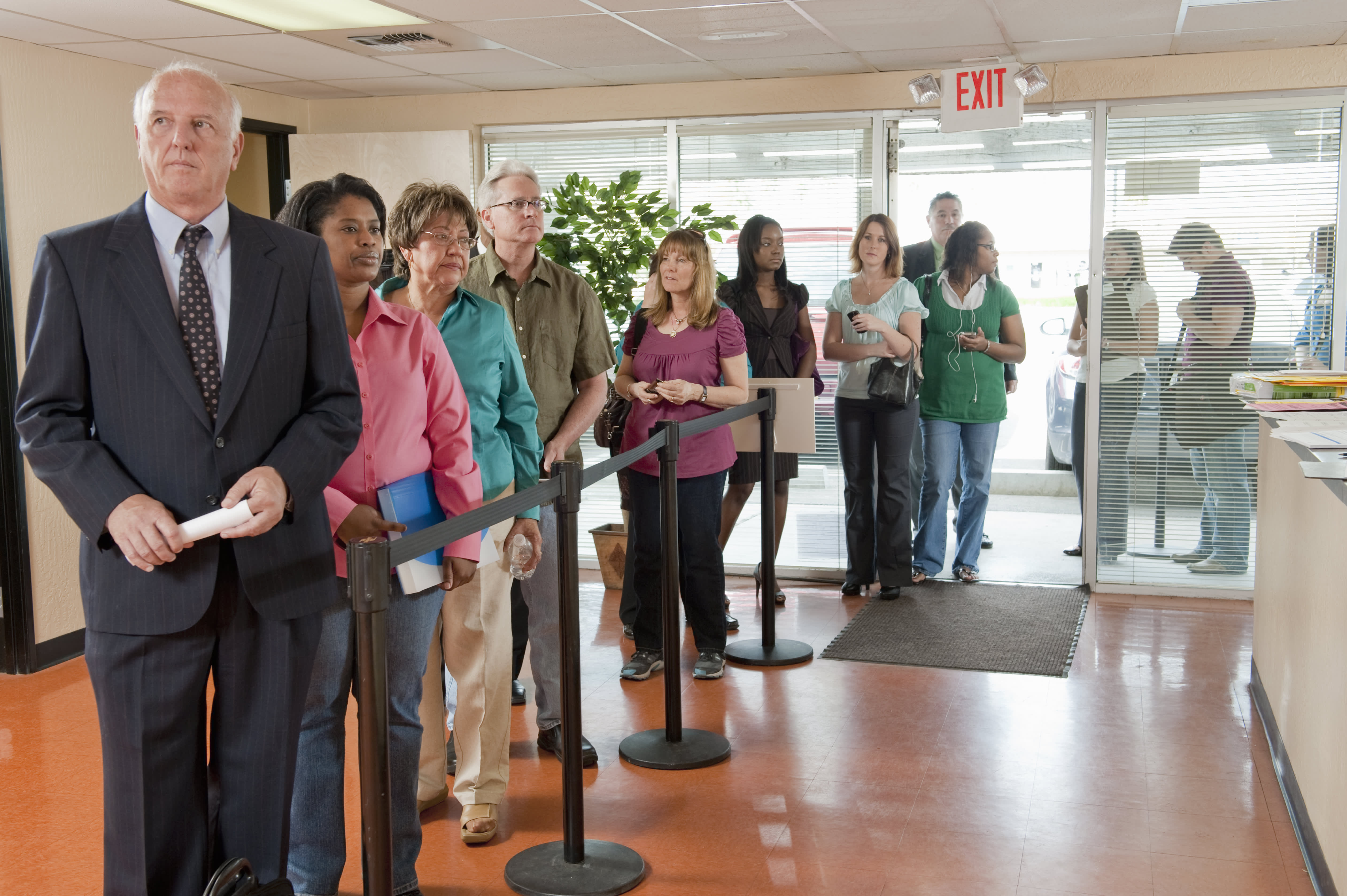People waiting in line at an unemployment office.
Yellow Dog Productions
A coronavirus relief bill unveiled Tuesday would significantly expand unemployment benefits for Americans who lose their jobs due to the country’s recent economic contagion.
The measure would beef up the nation’s unemployment insurance program, a state-administered program that provides temporary income support for out-of-work Americans. Final language could change before the bill’s scheduled release later today, though experts don’t expect it will relative to unemployment.
Under the legislation, unemployed workers would both collect bigger unemployment checks — which could, in some cases, even exceed their typical wages — and receive those payments over a longer period of time.
The legislation would also extend benefits to a broader pool of people, like gig workers and freelancers.
In some ways, the new provisions would eclipse similar actions the federal government took during the Great Recession a little over a decade ago, experts said. That recession was the country’s deepest since the Great Depression.
“It would represent a significant expansion over what is currently available,” Susan Houseman, vice president and director of research at the W. E. Upjohn Institute for Employment Research, said of the legislation.
The bill
The bill would offer jobless Americans $600 a week and pay 13 weeks of unemployment benefits, according to draft language of the Coronavirus Aid, Relief and Economic Security Act.
These provisions would be in addition to any benefits currently offered by a worker’s state, which administer their own unemployment insurance programs.
Workers are eligible for up to 39 weeks — around 10 months — of total federal and state benefits.
Benefits vary widely by state, which generally base payments on a worker’s prior four quarters of wages. Most states currently offer a maximum of 26 weeks of benefits. In January, state programs paid an average $385 weekly to unemployed workers, according to the Center on Budget and Policy Priorities.
Unemployed workers who wouldn’t typically qualify for state benefits would receive 50% of their state’s average benefits plus $600 a week, said Arindrajit Dube, an economics professor at the University of Massachusetts Amherst.
This category includes self-employed workers (such as those in the gig economy), those seeking part-time work, workers who quit their job or can’t reach their place of work as a result of COVID-19, or don’t have sufficient work history to otherwise qualify for benefits.
It’s conceivable that, under the legislative proposal, unemployment could ultimately pay some individuals more money than their previous paycheck, experts said.
Americans who can telework with pay and individuals receiving paid sick leave or other paid leave benefits don’t qualify for expanded unemployment benefits.
Expanded benefits would last through December 2020.
30% unemployment
The boost in unemployment benefits comes amid mounting evidence of a looming U.S. recession, as businesses across the country have had to close, lay off workers, or reduce their hours.
First-time claims for unemployment increased 33% last week, to 281,000, according to national figures released Thursday by the Labor Department. The agency attributed the increase to the COVID-19 virus. Economists expect a dramatic jump in claims when the Labor Department issues updated figures this week.
James Bullard, president of the Federal Reserve Bank of St. Louis, said this week that the U.S. unemployment rate could hit 30% in the second quarter — higher than during the Great Depression and about triple that of the Great Recession.
Such an increase would be a dramatic turnaround from an unemployment rate that had been hovering around 3.5%, its lowest level in a half century.
A 30% unemployment rate would equate to roughly 45 million Americans, said Stephen Wandner, a labor economist with the W.E. Upjohn Institute for Employment Research and senior fellow at the National Academy of Social Insurance.
“We’ve never had anything like that,” Wandner said. “The numbers could be much higher than they’ve ever been before.”
Unemployment insurance
The unemployment insurance program was created in 1935 under the Social Security Act as a way to provide temporary income support for workers who lose their jobs.
An extra $600 in weekly checks would be a “formidable increase” in benefits, according to Gary Burtless, an economist and senior fellow at the Brookings Institution.
An extra $600 from the federal government would be a 156% increase in the nationwide average of weekly state payments.
During the Great Recession, the federal government only paid an additional $25 a week (the rough equivalent of $30 today), Burtless said.
“This is a new development in unemployment benefits. The program has never been that generous in terms of weekly benefits,” he said.
By comparison, legislation passed during the Great Recession allowed unemployed workers in many states to collect up to 99 weeks — around two years — of benefits, Burtless said. That’s far more than the maximum 39 weeks of unemployment offered under the new legislation, he said.
Expanding benefits to gig workers is also a significant change in current law, experts said.
Workers in the gig economy — contractors who drive for Uber and Lyft, for example — aren’t currently eligible to collect unemployment benefits since their employers don’t pay the taxes that fund unemployment insurance.
This is a developing story. Check back for updates.
